Sheltie the Shetland Sheepdog at 7 years old
SHET-luhnd SHEEP-dawg 
The Shetland Sheepdog looks like a miniature copy of the rough-coated Collie. When viewed from the side, the head looks like a blunt wedge, with the muzzle tapering slightly from the ears to the nose. There is a slight stop. The teeth meet in a scissors or level bite. The nose is black. The almond-shaped eyes are dark; however, blue eyes can appear in the blue merle coat. The small ears are 3/4 erect with the tips folding forward. The neck is arched and muscular. The long tail is feathered, carried straight down, or at a slight upward curve. The tail should reach to the hock. Dewclaws are sometimes removed. The double coat is long and abundant all over the body, but is shorter on the head and legs, and the coat forms a mane around the neck and chest. The outer coat is straight and harsh to the touch, and the undercoat is soft and tight. Coat colors come in blue merle, sable and black with various amounts of white and/or tan.
The Shetland Sheepdog is loyal, willing and eager to please, making a wonderful companion dog. Docile and alert with a pleasant temperament. Loving, loyal and affectionate with its family, this breed needs people. Socialize it well starting at puppyhood. It is a good guard and watchdog. Sensitive to the tone of your voice, these dogs will not listen if they sense you do not mean what you say, and will also not listen if you are too harsh. They need their owners to be calm, but firm. They must be raised in a home where the humans are confident, consistent, pack leaders. Very intelligent, lively and trainable, the Shetland Sheepdog is one of the smartest breeds. With intelligence comes the need to occupy their minds. They like to be kept busy. The Sheltie is above all an intelligent herder, capable both of commanding large cattle and holding small sheep in check. The herding instinct is still very strong in many of them. They love to chase things. Teach this dog not to chase cars. A Sheltie should not be allowed to run free near a road as it may decide to chase a car or something else it sees across the road, running a high risk of getting hit by a car. Because of its beauty and kindness, the Sheltie has become a popular companion dog. Do not allow this dog to believe he needs to run your home, or many behavior problems will start to develop. They can become suspicious with strangers, especially with children. They may not allow themselves to be touched by strangers and will display noisy persistent barking, as they tell the humans to leave them alone. This can lead to guarding, snapping and even biting. They may hide behind something, barking persistently when company arrives. The dog needs to be told this is not an acceptable behavior. These negative traits are not Sheltie traits, but rather Small Dog Syndrome, human induced behaviors where the dog believes he is pack leader to humans. Varying degrees of negative behaviors result when a dog feels it is the leader of a human pack and must keep ITS humans in line. These negative traits will subside as soon as the humans around the dog start to display the proper leadership, along with daily pack walks to relieve mental and physical energy.
Height: 13 - 16 inches (33 - 40.6 cm)
Weight: 14 - 27 pounds (6.4 - 12.3 kg)
Like the Rough Collie, there is a tendency toward inherited malformation and disease of the eyes. Some lines may be prone to hypothyroidism and displacement of the patella (kneecap), which is thought to be inherited. Do not overfeed; gains weight easily. Some herding dogs carry a MDR1 gene which makes them sensitive to certain drugs that are otherwise okay to give another dog, but if tested positive for this gene can kill them.
The Sheltie will do okay in an apartment if sufficiently exercised. They are fairly active indoors and will do okay without a yard.
This active, graceful dog needs lots of exercise, which includes a daily walk or jog. They will also enjoy running free, but be sure the dog is in a safe area.
About 12-15 years
About 4 to 6 puppies
The coat is easier to care for than you might expect, but regular brushing is important. Mist the coat lightly with water before you begin and tease out the mats before they get bad, but use the comb sparingly. This breed is a seasonally heavy shedder. The dense undercoat is shed twice a year: in the spring and fall. The coat readily sheds dirt and mud and Shelties are quite fastidious about their cleanliness. Bathe or dry shampoo only when absolutely necessary.
The Shetland Sheepdog is related to the Rough Collie, both dogs descended from Border Collies that inhabited Scotland. The Border Collies were brought to the Scottish island of Shetland and crossed with the Icelandic Yakkin, a small island dog which is now extinct. By 1700, the Sheltie was completely developed. The dogs were used to herd and guard the sheep flocks of the Shetlands. This willing worker was very gentle when herding the miniature stock. The Shetland Sheepdog was first recognized in England in 1909 and by the AKC in 1911. The Sheltie is one of today's most popular companion dogs. Extremely smart, it excels at obedience competition. Some of the Sheltie's talents include: tracking, herding, watchdog, guarding, agility, competitive obedience and performing tricks.
Herding, AKC Herding
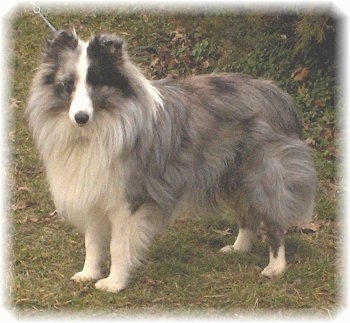
L-N-D'S DREAMS IN THE MIST CGC aka TURTLE the bi-blue Sheltie at 2 years old—"Turtle does some conformation showing, but most of all he is my baby. He likes to play ball with the other Shelties at home. Will jump into my arms when I ask him to. Is as spoiled as he can get." Photo courtesy of L-N-D Shelties
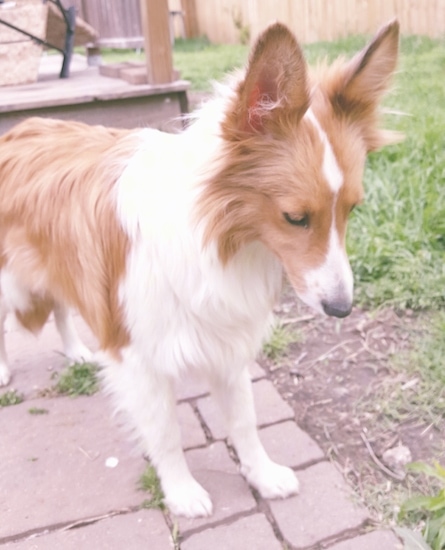
Dan Hocker the Sheltland Sheepdog at 1 year old—"He is a loving male Sheltie, who loves to sleep with our son, loves to fetch a ball and loves to take baths."
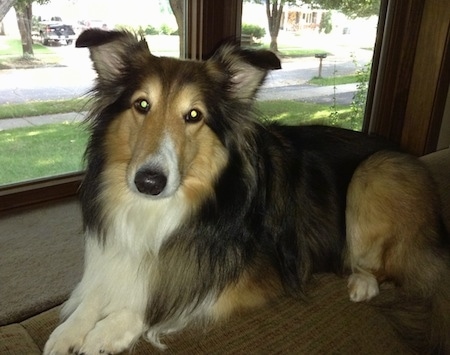
Brandi the Shetland Sheepdog at 6 years old—"Brandi is a wonderful dog and perfect for me."
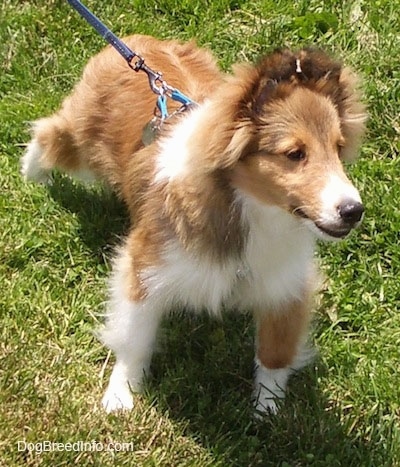
Chase the Sheltland Sheepdog puppy at 5 months old

"These are my two dogs: Beau (on the left) and Teddy Bear (on the right). I took this picture when they were about 15 weeks old. These two are brothers and they love living on the farm with me. They are AKC-registered Shelties. They get as much exercise as they want from the 60 acres surrounding my house. These two are amazing dogs. They don't bite or nip at all and are wonderful with little kids. They learn extremely fast. They both love playing with the other animals here, which are the cats, other dogs and the goat. I am waiting to introduce them to the cattle till they grow a little older, so they know not to mess with them."
Shelties, Axl and Casa: “Depends on the treat, we can salute for 5 minutes max!”
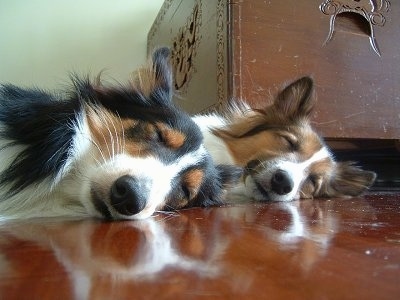
Shelties, Axl and Casa: “We love afternoon naps!”
Charlie the Shetland Sheepdog at 7 years old
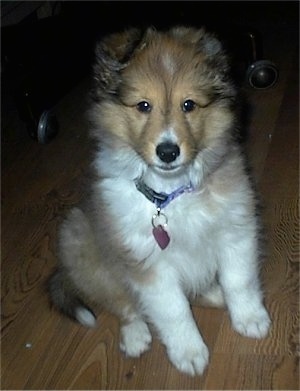
Mollie at about 5 months
Yogi the Shetland Sheepdog as a puppy at 8 weeks old